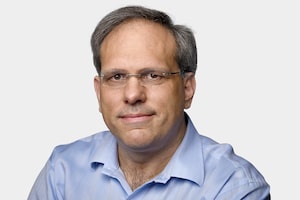Dr. Sara Vasconcelos in the laboratory at Toronto General Hospital on May 11.Christopher Katsarov/The Globe and Mail
When Sara Vasconcelos talks about her work, it sounds as if she’s in the restoration business. But instead of repairing damaged buildings, the researcher at Toronto’s University Health Network wants to fix damaged hearts by using stem cells to rebuild cardiovascular tissue.
Now, Dr. Vasconcelos is one step closer to achieving that goal with a $3-million grant from the Stem Cell Network, a Canadian research funding organization. Her effort is one of 32 projects across the country that rose to the top in a competition for in the largest outlay of federal funding for regenerative medicine in 20 years.
On Thursday, the Ottawa-based network announced a total of $19.5-million in awards, which together with matching funds from various partners, will translate into $42-million for research and clinical trials over the next three years. The funding will enable the work of more than 400 scientists, clinicians and trainees, the organization said.
“It’s a big step,” said Dr. Vasconcelos, who said she will use her award to build on preliminary findings obtained using rats. She will next work with pig hearts, which offer a much closer analogue to the human organ.
While doing so, she also hopes to overcome a barrier that has stood in the path of those who are trying to repair hearts using cardiomyocytes – heart tissue cells that are grown from embryonic stem cells. The problem is that the replacement cells wither away if they are not nourished and kept alive by blood vessels.
As part of her project Dr. Vasconcelos aims to use a technique in which small sections of microscopic blood vessels are harvested from human fat and implanted along with the heart cells.
“The microvessels that are like Lego pieces,” she said. “You can put a whole bunch of them in with the stem cell-derived cardiomyocytes and they will connect to each other and connect to the host vessels that carry blood.”
With her grant secured, Dr. Vasconcelos said she is assembling the team that will test the method on pig hearts later this year. Ultimately, her goal is to develop the technique into a therapy that can restore cardiac function in human patients following a heart attack, she said.
Among the other projects to win funding are some that are already heading for clinical studies. That includes a large study led by Guy Sauvageau, a hematologist at Maisonneuve-Rosemont Hospital in Montreal, that involves developing engineered blood stem cells to treat leukemia.
Working with a group of clinical sites in the U.S., Dr. Sauvageau and his team have already had success at treating patients with leukemia who relapse. The new project will involve introducing genetical engineered stem cells into people who are better able to withstand cancer treatment and facilitate recovery.
“Between 10,000 and 20,000 patients a year would benefit from this kind of therapy,” Dr. Sauvageau said.
In the future, he added, the study could open the door to teaching the body to continually produce and replenish its own cancer-killing immune cells rather than having those cells created externally and infused in a form of treatment know as CAR T-cell therapy.
As part of another of the funded projects, David Thompson at the Vancouver Coastal Health Research Institute will conduct clinical trials for one of the world’s first genetically engineered cell replacement therapies for type 1 diabetes.
Dr. Sara Vasconcelos points to an image of vascular tissue in the laboratory at Toronto General Hospital where they engineer cell and tissue regeneration.Christopher Katsarov/The Globe and Mail
The diversity of the projects highlights the increasing prominence of stem cells in multiple domains of health research, an area where Canada has a long track record of success ever since University of Toronto researchers James Till and Ernest McCullough established the existence of stem cells – cells which can differentiate into more specialized types – in bone marrow in 1961.
Tania Bubela, dean of health sciences at Simon Fraser University in Burnaby, B.C., said the kind of funding the Stem Cell Network provides helps bridge a crucial gap between fundamental laboratory research and proven therapies for patients.
“What we’ve realized over time is that where you get public sector investments to close the funding gap is exactly in that translational space from preclinical into early stage clinical trials,” Dr. Bubela said. “Once you have that proof that things are going to work and that they can be taken up by the health system, that’s when venture capital starts to get interested.”
Our Morning Update and Evening Update newsletters are written by Globe editors, giving you a concise summary of the day’s most important headlines. Sign up today.
 Ivan Semeniuk
Ivan Semeniuk